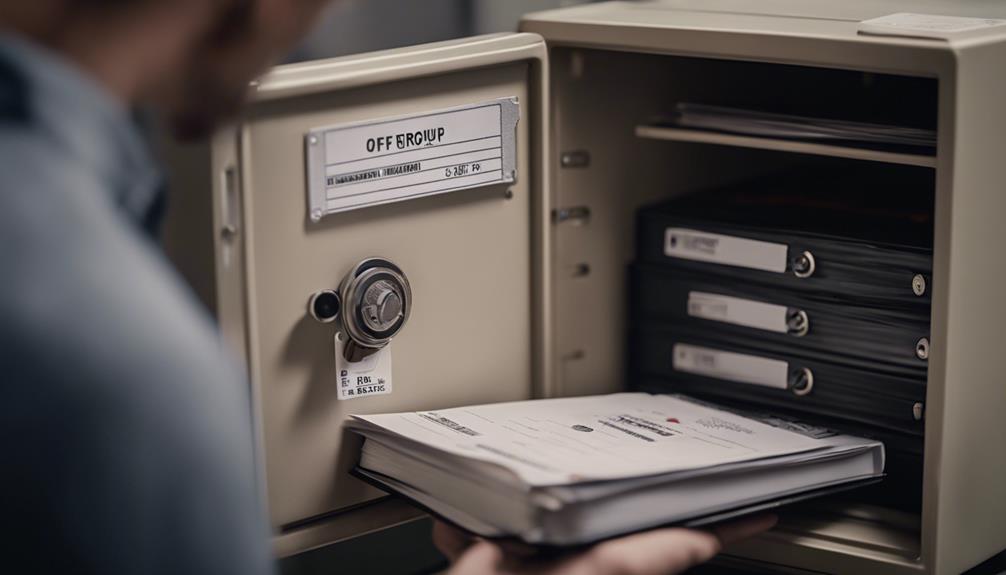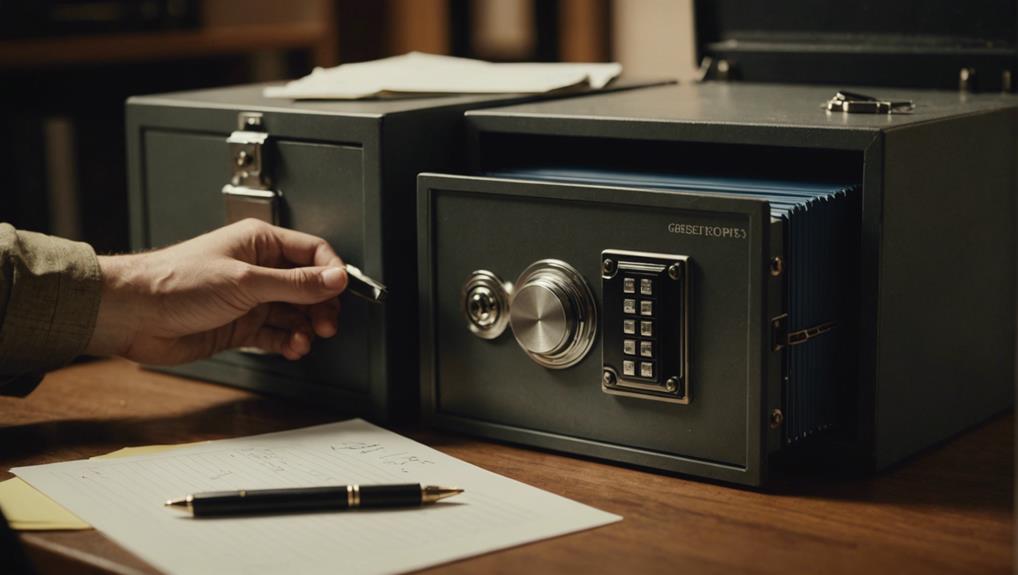When it comes to manual backup methods, the best choices include full, incremental, and differential backups. Full backups provide thorough data protection, while incremental backups efficiently copy changed data. Differential backups offer storage space efficiency by capturing changes since the last full backup. Utilizing removable media or external hard drives can enhance overall data protection through cost-effective and portable solutions. Consider incorporating Network-Attached Storage (NAS) backups for a well-rounded backup strategy. Discover more ways to safeguard your data effectively.
Full Backup Method
For a thorough backup solution, consider utilizing the full backup method. With this approach, a complete copy of all your data is made, guaranteeing extensive data protection. In the event of a data loss, having a full backup allows for a quick restoration process since all your data is readily available.
However, it's important to note that full backups require more storage space and time compared to other backup methods due to the need to store all data each time the backup runs. As a result, full backups are typically run periodically rather than daily because of the extensive resources needed.
To optimize your backup strategy, full backups are often combined with incremental or differential backups to strike a balance between storage space usage and the frequency of backups. By incorporating the full backup method into your backup strategy, you can ensure a robust and reliable data backup and restore process.
Incremental Backup Method
To enhance your data backup strategy, consider implementing the Incremental Backup Method. This method efficiently copies only the changed data since the last backup, reducing time and storage requirements. Incremental backups are a faster alternative to full backups, making them ideal for regular data protection.
By relying on file timestamps to identify changes, incremental backups guarantee that only new or modified data is backed up, optimizing storage space. These backups are commonly used alongside full backups to create a thorough data protection strategy.
Implementing incremental backups can help organizations save time and resources while maintaining data integrity. By incorporating incremental backups into your manual backup methods, you can improve your data protection measures, reduce backup time, and efficiently manage your storage resources.
Differential Backup Method

Consider utilizing the Differential Backup Method to efficiently back up all data that has changed since the last full backup. Here's why it could be the right choice for you:
- Storage Space Efficiency: While requiring more storage space than incremental backups, differentials need less than full backups, striking a balance.
- Capture All Changes: The first differential backup captures all changes since the last full backup, simplifying the process.
- Backup Speed: Subsequent differentials only capture changes since the last differential backup, making backups quicker.
- Efficient Tracking: Unlike incremental backups that rely on file time stamps, differentials efficiently track changes without this dependency.
Removable Media Backup
Utilize portable devices like USB drives, external hard drives, or DVDs for efficient and convenient removable media backups.
Removable media backup involves storing data on these devices, providing a cost-effective and portable solution for offline storage. By regularly updating and rotating these backups, you can guarantee data integrity and availability.
This method allows you to easily transport important data and keep it secure in a separate location from your primary system. Removable media backups are simple to create and offer a practical way to safeguard your information.
Whether you choose USB drives, external hard drives, or DVDs, the key is to establish a routine for backing up your data onto these portable devices. Embracing removable media backup as part of your backup strategy can enhance your overall data protection and give you peace of mind knowing your information is safely stored and easily accessible when needed.
External Hard Drive Backup

For a practical and efficient manual backup method, incorporating external hard drives into your data protection strategy guarantees secure and portable storage solutions. When considering external hard drive backups, keep these points in mind:
- Portable Solution: External hard drives offer a convenient way to backup your data and carry it with you wherever you go.
- Storage Needs: Choose an external hard drive size that fits your storage requirements, whether it's a small portable drive for on-the-go backups or a larger desktop model for extensive data storage.
- Data Transfer Speeds: The speed at which you can transfer data to and from the external hard drive depends on the type of connection it supports, such as USB 2.0, USB 3.0, or Thunderbolt.
- Data Integrity: Regularly updating and rotating your external hard drives used for backups can help maintain data integrity and provide redundancy in case of drive failure.
Network-Attached Storage (NAS) Backup
Exploring the efficiency of NAS backup solutions enhances data accessibility and security across network environments. NAS backup provides a centralized location for storing and accessing data over a network, offering scalability with the ability to add additional storage drives as needed. These devices often come equipped with built-in backup software, simplifying configuration and management.
One of the key advantages of NAS backup is the ability to access data from multiple devices, facilitating easy sharing and collaboration. Automated backups can be scheduled, ensuring that data is consistently protected against loss. By incorporating NAS backup into your backup strategy, you can improve data protection and recovery capabilities.
Whether it's for personal use or business purposes, understanding the types of NAS devices available and implementing backup best practices can elevate your overall backup approach. Make sure to explore cloud options for an additional layer of backup and data redundancy.
Well-Rounded Backup Strategy

To guarantee a well-rounded backup strategy, it's essential to explore various storage options that provide both convenience and security. By implementing the 3-2-1 Backup Rule and utilizing external hard drives or NAS devices, you can create redundant copies of your data for added protection.
Keep in mind to store multiple copies on different types of media and regularly test your backups to ensure data integrity and recoverability.
Storage Options
Considering the various storage options available for creating a well-rounded backup strategy, you can tailor your manual backups to suit your specific needs and preferences. When selecting storage options for manual backups, keep in mind the following:
- USB drives and DVDs: Ideal for portability and quick access to essential data.
- External hard drives: Offer ample storage capacity for larger backup requirements.
- Network-attached storage (NAS) devices: Provide centralized backup management and accessibility across multiple devices.
- Cloud storage: Guarantees off-site backup, scalability, and accessibility from anywhere.
Data Security
To strengthen your manual backup strategy, prioritize data security by implementing robust encryption measures to safeguard your valuable information both at rest and in transit.
Compliance requirements often mandate data encryption in manual backup methods to prevent unauthorized access and protect against potential data breaches. Encrypting sensitive information enhances data integrity and guarantees that your data remains secure during manual backup processes.
It's vital to manage encryption keys securely to safeguard your data effectively. Regularly testing data recoverability is essential to identify any weaknesses and maintain the security of your manual backup strategies.
Conclusion
Now that you know about the best manual backup methods, it's time to choose the right one for you. Whether you prefer the simplicity of a full backup, the efficiency of incremental backups, or the convenience of external hard drives, there's a method that fits your needs.
By implementing a well-rounded backup strategy that combines different methods, you can safeguard your precious data is safe and secure. Don't wait until it's too late – backup today and protect your memories.



